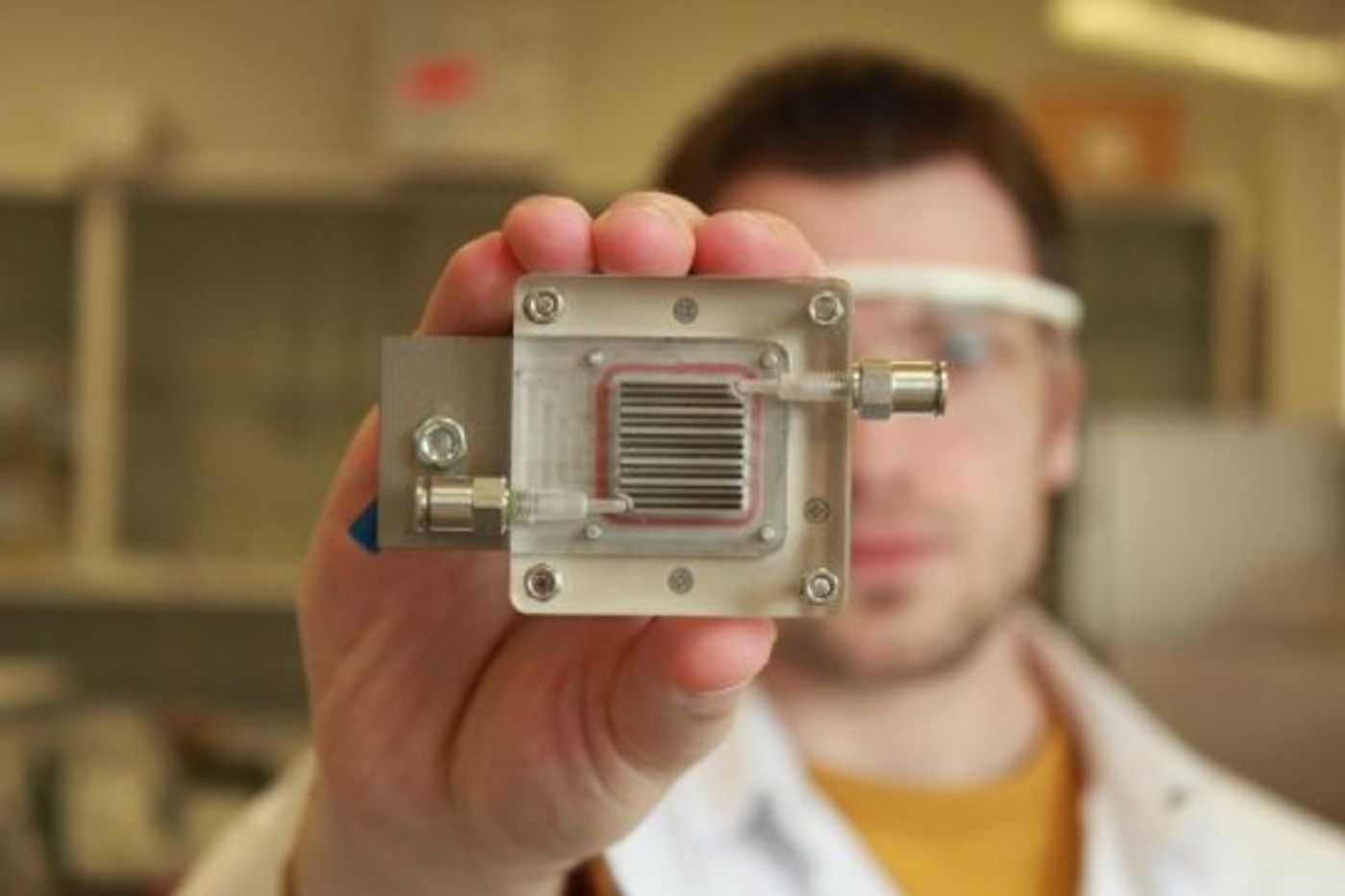How to Make Hydrogen Gas from Air Pollution
The goal in eco-minded technology this day in age is to make something we want by utilizing something we don’t want. That’s exactly what researchers from the University of Antwerp and KU Leuven in Belgium have done. The team has developed a process that purifies air from organic pollutants while generating power in the form of hydrogen gas.
Professor Sammy Verbruggen explains how it works: "We use a small device with two rooms separated by a membrane. Air is purified on one side, while on the other side hydrogen gas is produced from a part of the degradation products. This hydrogen gas can be stored and used later as fuel, as is already being done in some hydrogen buses, for example. "
The concept is called an all-gas-phase photoelectrochemical (PEC) cell. When exposed to light, the cell is capable of converting volatile organic pollutants to CO2 at a TiO2 photoanode. Using PEC technology to remediate air pollution would be great on its own, but the added fuel-generation feature really motivates the scientists’ cause. Hydrogen gas is created at a dark Pt cathode where it can then be saved for later use. The study explains that while the system is most efficient working with organic pollutants in inert carrier gas, it still does create photocurrents in the presence of oxygen, which is imperative if the cell is to be used with organic contaminated air.
Because the cell needs to be exposed to light in order to work, the team hopes to use natural sunlight; the technology is similar solar cell technology, working at the membrane level. They have tweaked several different processes, explains professor Verbruggen. "In the past, these cells were mostly used to extract hydrogen from water. We have now discovered that this is also possible, and even more efficient, with polluted air." They aren't the first to try to convert air pollution into a usable product.
There is a lot of work to be done before the PEC cell could actually be used for commercial or industrial processes. "We are currently working on a scale of only a few square centimeters. At a later stage, we would like to scale up our technology to make the process industrially applicable. We are also working on improving our materials so we can use sunlight more efficiently to trigger the reactions. "
Sources: Science Daily, ChemSusChem









